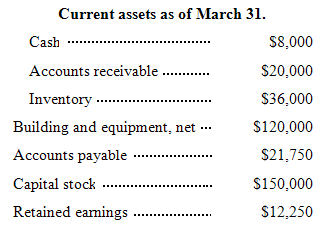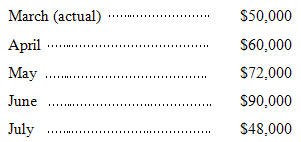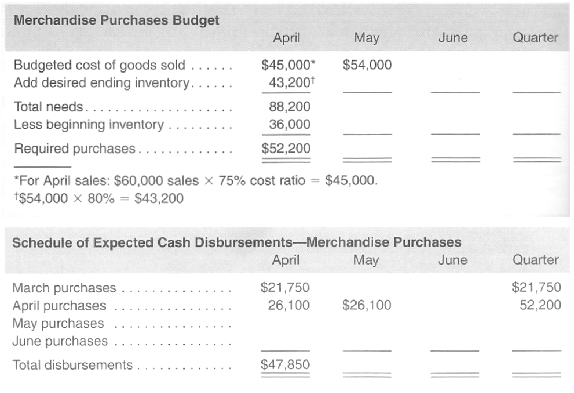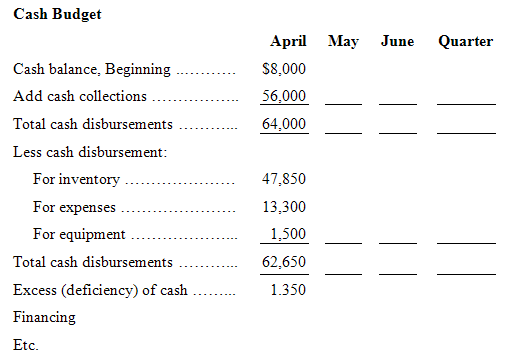The following data relate to the operations of Shilow Company, a wholesale distributor of consumer goods: (a)
Question:
The following data relate to the operations of Shilow Company, a wholesale distributor of consumer goods:
(a) The gross margin in 25% of sales

(b) Actual and budgeted sales data:

(c) Sales are 60% for cash and 40% on credit. Credit sales are collected in the month following sale. The accounts receivable at March 31 are a result of March credit sales.
(d) Each month’s ending inventory should equal 80% of the following month’s budgeted cost of goods sold.
(e) One-half of a month’s inventory purchases is paid for in the month of purchase; the other half is paid for in the following month. The accounts payable at March 31 are the result of March purchases of inventory.
(f) Monthly expenses are as follows: commissions, 12% of sales; rent, $2,500 per month; other expenses (excluding depreciation), 6% of sales. Assume that these expenses are paid monthly. Depreciation is $900 per month (includes depreciation on new assets).
(g) Equipment costing $1,500 will be purchased for cash in April.
(h) Management would like to maintain a minimum cash balance of at least $4,000 at the end of each month. The company has an agreement with a local bank that allows the company to borrow in increments of $1,000 at the beginning of each month, up to a total loan balance of $20,000. The interest rate on these loans is 1% per month and for simplicity we will assume that interest is not compounded. The company would, as far as it is able, repay the loan plus accumulated interest at the end of the quarter.
Required:
Using the preceding data:
1. Complete the following schedule:

2. Complete the following:

3. Complete the following:

4. Complete the following cash budget:

5. Prepare an absorption costing income statement, similar to the one shown in Schedule 9 in the chapter, for the quarter ended June 30.
6. Prepare a balance sheet as of June 30.
Ending InventoryThe ending inventory is the amount of inventory that a business is required to present on its balance sheet. It can be calculated using the ending inventory formula Ending Inventory Formula =... Balance Sheet
Balance sheet is a statement of the financial position of a business that list all the assets, liabilities, and owner’s equity and shareholder’s equity at a particular point of time. A balance sheet is also called as a “statement of financial...
Step by Step Answer:

Managerial Accounting
ISBN: 978-0697789938
13th Edition
Authors: Ray H. Garrison, Eric W. Noreen, Peter C. Brewer





